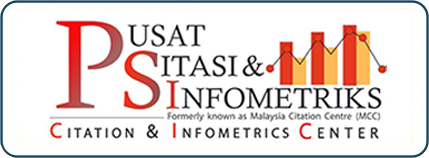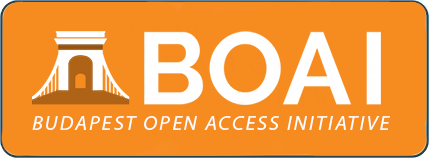Short-Term and Long-Term Effects of the Islamic Bank Financing in Construction Sector on GDP in Indonesia
Evidence from Conditional Error Correction Model
DOI:
https://doi.org/10.33102/jmifr.572Keywords:
Islamic Bank Financing, Indonesia, GDP, Conditional Error Correction Model, Construction SectorAbstract
Research on the role of Islamic banks on economic growth has been widely conducted. However, it focuses on total Islamic Bank Financing (IBF) rather than on sector-specific Islamic financing. This research addresses the gap by examining the short-term and long-term influence of Islamic bank financing in the construction sector on the Gross Domestic Product (GDP) in Indonesia. This research uses a quantitative approach, using the Conditional Error Correction Model (CECM) analysis method. Secondary data used in this research are from the first semester of 2006 to the first semester of 2023 and are taken and processed from related official institutions such as Bank Indonesia, the Central Statistics Agency, and the Financial Services Authority. In the autoregressive distributive lag (ARDL) model in the construction sector, IBF’s short-term impact on GDP is positive but insignificant, while the long-term effect is significantly positive.
Downloads
References
Abubakar, M., Abdullahi, M. B., & Bala, K. (2018). Analysis of the causality links between the growth of the construction industry and the growth of the Nigerian economy. Journal of Construction in Developing Countries, 23(1), 103–113. https://doi.org/10.21315/jcdc2018.23.1.6
Abusharbeh, M. T. (2020). Determinants of Islamic bank financing in the Middle East: Vector error correction model (VECM). Investment Management and Financial Innovations, 17(4), 285–298. https://doi.org/10.21511/imfi.17(4).2020.25
Afandi, M. A., & Amin, M. (2019). Islamic bank financing and its effects on economic growth: A cross province analysis. Signifikan: Jurnal Ilmu Ekonomi, 8(2), 243–250. https://doi.org/http://dx.doi.org/10.15408/sjie.v8i2.10977
Agustina, M., & Majid, M. S. A. (2020). Do good corporate governance and financing risk management matter for Islamic banks’ performance in Indonesia? Etikonomi, 19(2), 169–184. https://doi.org/10.15408/etk.v19i2.15080
Ahmed, F., Kousar, S., Pervaiz, A., & Ramos-Requena, J. P. (2020). Financial Development, Institutional Quality, and Environmental Degradation Nexus: New Evidence from Asymmetric ARDL Co-Integration Approach. Sustainability, 12(18), 1–21. https://doi.org/10.3390/su12187812
Aisyah, S., Ismail, N., Sulaiman, I. F., Cahyo, E. N., & Sup, D. F. A. (2022). Rethinking the paradigm of Islamic banking: Integrated of commercial and social oriented. Al-Iktisab Journal of Islamic Economic Law, 6(2), 147–168. https://doi.org/10.21111/al-iktisab.v6i2.8844
Ajmair, M., Gilal, M., & Hussain, K. (2016). Determinants of services sector growth in Pakistan. European Scientific Journal ESJ, 12(34), 297–306. https://doi.org/10.19044/esj.2016.v12n34p297
Al-Jabsheh, F., Al-Qudsi, S. S., & Hajeeh, M. A. (2021). Investment and sustainable economic growth: Empirical perspective on Kuwait’s dual challenge during the Covid-19 pandemic and beyond. International Journal of Economics and Financial Issues, 11(4), 41–52. https://doi.org/10.32479/ijefi.11513
Alhowaish, A. K. (2015). Causality between the construction sector and economic growth: The case of Saudi Arabia. International Real Estate Review, 18(1), 131–147. https://doi.org/10.53383/100196
Alkousini, E. M. (2020). Worker remittances compared to other elements of external financing and their impact on economic growth and human capital in Jordan (1979-2015). International Journal of Economics Finance and Management Sciences, 8(5), 194–204. https://doi.org/10.11648/j.ijefm.20200805.14
Andrean, D., & Mukhlis, I. (2021). Analisis pengaruh kredit perbankan, pembiayaan Bank Syariah dan investasi terhadap pertumbuhan ekonomi di Indonesia periode sebelum pandemi Covid-19 (2015-2019) dan periode pandemi Covid-19 tahun 2020. Jurnal Ekonomi Bisnis Dan Pendidikan, 1(9), 844–853. https://doi.org/10.17977/um066v1i92021p844-853
Anggraini, M. (2019). Islamic banking development and economic growth: A case of Indonesia. Asian Journal of Islamic Management (AJIM), 1(1), 51–65. https://doi.org/10.20885/ajim.vol1.iss1.art5
Annisya, T., & Nurbaiti, N. (2023). Efficiency analysis of Islamic commercial banks using a two-stage data analysis method. Tazkia Islamic Finance and Business Review, 16(1), 22–40. https://doi.org/10.30993/tifbr.v16i2.295
Anwar, S. M., Junaidi, J., Salju, S., Wicaksono, R., & Mispiyanti, M. (2020). Islamic bank contribution to Indonesian economic growth. International Journal of Islamic and Middle Eastern Finance and Management, 15(3), 519–532. https://doi.org/10.1108/IMEFM-02-2018-0071
Ariffin, M. I., & Ibrahim Nuhu Tahir. (2022). Economic concepts and ideas of Al-Bukhārī: An analysis of the book of sales in Sahih Al-Bukhārī. The Journal of Muamalat and Islamic Finance Research, 19(1), 1–20. https://doi.org/10.33102/jmifr.v19i1.405
Asnawi, A., Irfan, I., & Ramadhani, M. F. C. (2020). The gap in economic growth from foreign investment and domestic investment across provinces in Indonesia. Electronic Journal of Education Social Economics and Technology, 1(1), 34–38. https://doi.org/10.33122/ejeset.v1i1.7
Aysan, A. F., Disli, M., & Ozturk, H. (2018). Bank lending channel in a dual banking system: Why are Islamic banks so responsive? World Economy, 41(3), 674–698. https://doi.org/10.1111/twec.12507
Beck, T., Demirguc-Kunt, A., & Levine, R. L. (2004). Finance, Inequality, and Poverty: Cross-Country Evidence (No. 10979). Cambridge. https://doi.org/10.3386/w10979
Bella, F. I. (2023). The influence of Islamic banks and sovereign retail sukuk on economic growth in Indonesia. Al-Tijary, 8(2), 139–154. https://doi.org/10.21093/at.v8i2.4406
Bilgin, M. H., Danisman, G. O., Demir, E., & Tarazi, A. (2021). Bank credit in uncertain times: Islamic vs. conventional banks. Finance Research Letters, 39, 1–7. https://doi.org/10.1016/j.frl.2020.101563
Buallay, A. (2019). Sustainability Reporting and firm’s performance: Comparative study between manufacturing and banking sectors. International Journal of Productivity and Performance Management, 69(3), 431–445. https://doi.org/10.1108/ijppm-10-2018-0371
Cahyaningsih, N. (2016). The analysis of factors affecting foreign investment in Indonesia. Global Review of Islamic Economics and Business, 3(1), 59–72. https://doi.org/10.14421/grieb.2015.031-05
Camino‐Mogro, S., & Bermúdez-Barrezueta, N. (2021). productivity determinants in the construction sector in emerging country: New evidence from Ecuadorian firms. Review of Development Economics, 25(4), 2391–2413. https://doi.org/10.1111/rode.12771
Campos, P. M. (2023). Impact of airport infrastructure investment on the growth of the Angolan economy: An auto-regressive distributed lag analysis. Journal of Airline and Airport Management, 13(1), 12–30. https://doi.org/10.3926/jairm.356
Dreher, A. (2006). Does globalization affect growth? Evidence from a new index of globalization. Applied Economics, 38(10), 1091–1110. https://doi.org/10.1080/00036840500392078
Duwal, N. (2023). Education and economic growth in Nepal: An ARDL approach. Economic Journal of Development Issues, 36(1–2), 24–42. https://doi.org/10.3126/ejdi.v36i1-2.63906
Elakkad, R. M. (2024). An empirical test of endogenous growth model for Egypt. Journal of Contemporary Economic Studies, 15(1), 335–358. https://doi.org/10.21608/jces.2024.349496
Etukafia, N. I., Ekpo, N. B., & Asogwa, I. E. (2017). Modeling long-run and short-run dynamics of foreign direct investment on the manufacturing sector growth in Nigeria: The ARDL bound testing approach. International Journal of Economics and Finance, 9(11), 128–136. https://doi.org/10.5539/ijef.v9n11p128
Faizah, I., Fasa, M. I., Suharto, S., Rahmanto, D. N. A., & Athief, F. H. N. (2019). Determinants of domestic direct investment in Indonesia: Islamic economic approach. Jejak, 12(2), 282–297. https://doi.org/10.15294/jejak.v12i2.20973
Farahani, Y. G., & Dastan, M. (2013). Analysis of Islamic banks’ financing and economic growth: a panel cointegration approach. International Journal of Islamic and Middle Eastern Finance and Management, 6(2), 156–172. https://doi.org/10.1108/17538391311329842
Färe, R. (1988). Fundamentals of Production Theory (1st ed.). Springer Nature Link. https://doi.org/10.1007/978-3-642-51722-8
Farhan, A. (2022). Assessing the performance of Islamic banks using the Sharia conformity and profitability (SCNP) model and the Sharia maqashid index (SMI) in Islamic commercial banks in Indonesia for the 2012-2020 period. International Journal of Current Science Research and Review, 5(12), 4752–4759. https://doi.org/10.47191/ijcsrr/v5-i12-36
Farras, N. H., & Darwanto, D. H. (2021). Analysis of the influence of Sharia financial sector on Indonesian national income 2011-2020. Jurnal Ekonomi Syariah Teori Dan Terapan, 8(5), 630–640. https://doi.org/10.20473/vol8iss20215pp630-640
Fathia, N., Silvia, V., & Gunawan, E. (2021). Analysis of foreign investment determinants in Indonesia. Economics Development Analysis Journal, 10(3), 338–350. https://doi.org/10.15294/edaj.v10i3.45375
Gani, I. M., & Bahari, Z. (2021). Islamic banking’s contribution to the Malaysian real economy. ISRA International Journal of Islamic Finance, 13(1), 6–25. https://doi.org/10.1108/IJIF-01-2019-0004
Greenwood, R., & Scharfstein, D. (2013). The growth of finance. Journal of Economic Perspectives, 27(2), 3–28. https://doi.org/10.1257/jep.27.2.3
Hachicha, N., & Amar, A. Ben. (2015). Does Islamic bank financing contribute to economic growth? The Malaysian case. International Journal of Islamic and Middle Eastern Finance and Management, 8(3), 349–368. https://doi.org/10.1108/IMEFM-07-2014-0063
Hardi, I., Dawood, T. C., & Syathi, P. B. (2021). Determinants comparative advantage of non-oil export 34 provinces in Indonesia. International Journal of Business Economics and Social Development, 2(3), 98–106. https://doi.org/10.46336/ijbesd.v2i3.137
Hartarska, V., Nadolnyak, D. A., & Shen, X. (2015). Agricultural credit and economic growth in rural areas. Agricultural Finance Review, 75(3), 302–313. https://doi.org/10.1108/afr-04-2015-0018
Ibrahim, M. H., & Sufian, F. (2014). A structural VAR analysis of Islamic financing in Malaysia. Studies in Economics and Finance, 31(4), 371–386. https://doi.org/10.1108/sef-05-2012-0060
Khalidin, B., & Masbar, R. (2017). Interest rate and financing of Islamic banks in Indonesia (A vector auto regression approach). International Journal of Economics and Finance, 9(7), 154–164. https://doi.org/10.5539/ijef.v9n7p154
Koivu, T. (2002). Do efficient banking sectors accelerate economic growth in transition countries. BOFIT Discussion Papers, 14, 5–26. https://doi.org/10.2139/ssrn.1015710
Liu, X., Shu, C., & Sinclair, P. (2009). Trade, foreign direct investment and economic growth in Asian economies. Applied Economics, 41(13), 1603–1612. https://doi.org/10.1080/00036840701579176
Maulida, N. A. Z., Anshor, D. S. a., & Budiwati, A. (2022). An analysis of the soundness of Sharia state-own enterprises (SOE) bank before merger to BSI by using the rgec method. KnE Social Sciences, 7(10), 306–319. https://doi.org/10.18502/kss.v7i10.11368
Mehmood, W., Mohd-Rashid, R., Ong, C. Z., & Abbas, Y. A. (2021). Factors driving IPO variability: Evidence from Pakistan stock exchange. Journal of Economics Finance and Administrative Science, 26(52), 300–316. https://doi.org/10.1108/jefas-04-2021-0036
Mehrara, M., & Rezaei, S. (2015). The determinants of economic growth in iran based on Bayesian model averaging. International Letters of Social and Humanistic Sciences, 49, 1–11. https://www.ssoar.info/ssoar/bitstream/handle/document/57416/ssoar-ilshs-2015-49-mehrara_et_al-The_determinants_of_economic_growth.pdf?sequence=1&isAllowed=y
Munir, K., & Arshad, S. (2018). Factor accumulation and economic growth in Pakistan: Incorporating human capital. International Journal of Social Economics, 45(3), 480–491. https://doi.org/10.1108/ijse-12-2016-0346
Naz, S. A., & Gulzar, S. (2023). Islamic financial development & economic growth: the emergence of Islamic financial market in Pakistan. Journal of Islamic Accounting and Business Research, 14(6), 989–1012. https://doi.org/10.1108/jiabr-09-2022-0222
Nigussie, L. F., Darwish, M. M., & Ghebrab, T. (2019). Recycling fine aggregate from demolished hollow concrete block for green concrete in Ethiopia. Global Journal of Engineering Sciences, 3(2), 1–10. https://doi.org/10.33552/gjes.2019.03.000559
Nofrianto, N., Muliana, Y., & Cahyadi, A. I. (2021). The impact of Islamic bank financing, government spending, and investment on economic growth in Indonesia. Signifikan Jurnal Ilmu Ekonomi, 10(2), 299–310. https://doi.org/10.15408/sjie.v10i2.20469
Nursyamsiah, T. (2017). Macroeconomic determinants of Islamic banking financing. Tazkia Islamic Finance and Business Review, 11(2), 145–164. https://doi.org/10.30993/tifbr.v11i2.136
Nwanna, I. O., & Chinwudu, C. F. (2016). The effect of financial deepening on economic growth in Nigeria (1985-2014). IOSR Journal of Business and Management Journal of Economics and Finance, 7(4), 11–28. https://doi.org/10.9790/5933-0704011128
Obioma, I. F., Ihemeje, J. C., Ogbonna, C. I., Amadi, C. O., & E, H. U. (2021). Effect of agricultural financing on the performance of agricultural sector in Nigeria. Journal La Bisecoman, 2(2), 1–13. https://doi.org/10.37899/journallabisecoman.v2i2.360
Olanipekun, A. O., & Saka, N. (2019). Response of the Nigerian construction sector to economic shocks. Construction Economics and Building, 19(2), 160–180. https://doi.org/10.5130/ajceb.v19i2.6667
Philippon, T., & Reshef, A. (2013). An international look at the growth of modern finance. Journal of Economic Perspectives, 27(2), 73–96. https://doi.org/10.1257/jep.27.2.73
Putra, H. S., Putri, Y., Anis, A., & Azhar, Z. (2021). Contribution of conventional bank lending for agricultural sector in Indonesia. Jurnal Perspektif Pembiayaan Dan Pembangunan Daerah, 9(4), 331–342. https://doi.org/10.22437/ppd.v9i4.13095
Putriani, D., Ghani, G. M., & Kartiwi, M. (2021). Mark-up vs. Interest-based financing on GDP: An application of agent-based computational model. Journal of Islamic Monetary Economics and Finance, 7(1), 55–76. https://doi.org/10.21098/jimf.v7i1.1345
Rahim, D. A. (2023). Reviewing the role of investment in the West Kalimantan border. Ekuilibrium Jurnal Ilmiah Bidang Ilmu Ekonomi, 18(1), 83–93. https://doi.org/10.24269/ekuilibrium.v18i1.2023.pp83-93
Rasyida, P., Ahmad, S., & Anna, Y. (2021). The Impact of financing in Islamic Banking on Indonesian economic growth. Eurasia: Economics & Business, 2(44), 42–51. https://doi.org/10.18551/econeurasia.2021-02.04
Riaz, M., Kazmi, S. M. A., Mirza, A., & Mehmood, A. (2022). Real sector growth owed to Islamic finance. Review of Applied Management and Social Sciences, 5(4), 573–585. https://doi.org/10.47067/ramss.v5i4.279
Robinson, J. (1953). The production function and the theory of capital. The Review of Economic Studies, 21(2), 81–106. https://doi.org/10.2307/2296002
Rodoni, A., Salim, A., Amalia, E., & Rakhmadi, R. S. (2017). Comparing efficiency and productivity in Islamic banking: Case study Indonesia, Malaysia and Pakistan. Al-Iqtishad Journal of Islamic Economics, 9(2), 227–242. https://doi.org/10.15408/aiq.v9i2.5153
Saka, N., & Adegbembo, T. F. (2022). An assessment of the impact of the construction sector on the gross domestic product (GDP) of Nigeria. Journal of Surveying Construction & Property, 13(1), 42–56. https://doi.org/10.22452/jscp.vol13no1.4
Saleem, A., Sági, J., & Setiawan, B. (2021). Islamic Financial Depth, Financial Intermediation, and Sustainable Economic Growth: ARDL Approach. Economies, 9(2), 1–22. https://doi.org/10.3390/economies9020049
Samimi, P., & Jenatabadi, H. S. (2014). Globalization and economic growth: Empirical evidence on the role of complementarities. Plos One, 9(4), 1–7. https://doi.org/10.1371/journal.pone.0087824
Setiawan, I. (2019). The role of Islamic banking in the development of economic sectors in Indonesia. International Journal of Applied Business Reseatch, 1(2), 88–99. https://doi.org/10.35313/ijabr.v1i02.70
Shrestha, P. K., & Semmler, W. (2014). Monetary policy and international reserves: Empirical evidence from East Asian Countries. International Journal of Finance & Economics, 20(3), 191–205. https://doi.org/10.1002/ijfe.1509
Taujiharrahman, D., El-Junusi, R., & Fataron, Z. A. (2021). Financing relations of MSME and non-MSMEs, number of Syariah bank offices to gross regional domestic product. Al-Arbah Journal of Islamic Finance and Banking, 3(1), 1–20. https://www.researchgate.net/publication/351905507_Financing_Relations_Of_MSME_And_Non-_MSMEs_Number_Of_Syariah_Bank_Offices_To_Gross_Regional_Domestic_Product_Keywords_Number_of_Offices_financing_of_MSMEs_financing_of_Non_MSMEs_Gross_Regional_Domesti
Tekin, B. (2021). Empirical reflections of the nexus between dual banking system credits and industry production in turkey: Cointegration and causality analysis. Cankiri Karatekin Universitesi Iktisadi Ve Idari Bilimler Fakultesi Dergisi, 11(2), 595–623. https://doi.org/10.18074/ckuiibfd.896603
Timsina, N. (2014). Bank credit and economic growth in Nepal: An empirical analysis. NRB Economic Review, 26(2), 1–24. https://doi.org/10.3126/nrber.v26i2.52577
Tlapana, T., & Mngeni, Z. (2021). The challenges faced by african females in the construction industry: Evidence from a selected metropolis of the Eastern Cape. Modern Management Review, 26(4), 107–117. https://doi.org/10.7862/rz.2021.mmr.28
Topić-Pavković, B., Kovačević, S., & Kurušić, D. (2023). the impact of innovative financial and banking development on the economic growth of Bosnia and Herzegovina. Economics, 11(1), 251–267. https://doi.org/10.2478/eoik-2022-0022
Trew, A. (2008). Efficiency, Depth and Growth: Quantitative implications of finance and growth theory. Journal of Macroeconomics, 30(4), 1550–1568. https://doi.org/10.1016/j.jmacro.2007.12.005
Trisnaningtyas, J. P. N. (2022). The Impurity of Shariah Banking in Indonesia. Journal of Sharia Economics, 3(1), 1–12. https://doi.org/10.22373/jose.v3i1.1453
Venegas-Martínez, F., & Aali-Bujari, A. (2021). Impact of construction industry on economic growth in Africa: Granger Causality and GMM estimation of dynamic panel models. Review of Economics and Finance, 19(1), 292–299. https://doi.org/10.55365/1923.x2021.19.30
Wahyudi, S. T., Nabella, R. S., & Sari, K. (2021). Measuring the competition and banking efficiency level: A study at four commercial banks in Indonesia. Banks and Bank Systems, 16(1), 17–26. https://doi.org/10.21511/bbs.16(1).2021.02
Widarjono, A., & Sidiq, S. S. (2022). The sectoral financing diversification and the profitability of Islamic banking in Indonesia. Jurnal Ekonomi Dan Bisnis Islam, 8(2), 201–219. https://doi.org/10.20473/jebis.v8i2.36316
Xiahou, X., Tang, Y., Yuan, J., Chang, T., & Liu, P. (2018). Evaluating Social Performance of Construction Projects: An Empirical Study. Sustainability, 10(7), 1–16. https://doi.org/10.3390/su10072329
Yorucu, V. (2016). Growth impact of CO2 emissions caused by tourist arrivals in Turkey. International Journal of Climate Change Strategies and Management, 8(1), 19–37. https://doi.org/10.1108/ijccsm-12-2014-0148
Yusof, R. M., & Bahlous, M. (2013). Islamic banking and economic growth in GCC & East Asia countries: A panel cointegration analysis. Journal of Islamic Accounting and Business Research, 4(2), 151–172. https://doi.org/10.1108/jiabr-07-2012-0044
Zarrouk, H., Jedidia, K. Ben, & Moualhi, M. (2016). Is Islamic bank profitability driven by same forces as conventional banks? International Journal of Islamic and Middle Eastern Finance and Management, 9(1), 46–66. https://doi.org/10.1108/imefm-12-2014-0120
Zulkhibri, M. (2018). The impact of monetary policy on Islamic bank financing: Bank-level evidence from Malaysia. Journal of Economics Finance and Administrative Science, 23(46), 306–322. https://doi.org/10.1108/jefas-01-2018-0011
Zulkhibri, M., & Sukmana, R. (2016). Financing channels and monetary policy in a dual banking system: Evidence from Islamic banks in Indonesia. Economic Notes, 46(1), 117–143. https://doi.org/10.1111/ecno.12076
Zulkifli, K. (2024). The impact of stock market development on economic growth a case of Malaysia. Information Management and Business Review, 16(1(I)), 86–104. https://doi.org/10.22610/imbr.v16i1(i).3663
Downloads
Published
How to Cite
Issue
Section
License
Copyright (c) 2024 Eko Fajar Cahyono, Nur Syazwani Mazlan , Mohd Naseem Niaz Ahmad, Wan Azman Saini Wan Ngah, Azali Mohamed

This work is licensed under a Creative Commons Attribution 4.0 International License.















